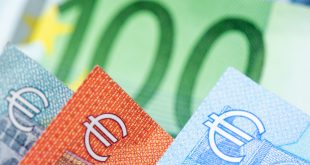Financial assets went through quite, but volatile, trading conditions on Monday, despite most major countries celebrating Labour Day, keeping local markets closed to observe the occasion.
Oil prices were down sharply on Monday after the latest manufacturing data showed that the sector contracted for the 5th straight month in April, ending a 30-month period of expansion. Brent crude was down 1.8% to $79.15 per barrel at 11:30 ET, marking the first time it has slipped below $80 per barrel in nearly four weeks.
The US Dollar edged higher against its rivals, initially extending Friday’s gains and later taking advantage of better-than-anticipated American data.
Pre-FOMC sentiment together with latest economic data ahead of central banks’ events this week pushed the US dollar higher. The dollar’s rally continued at the beginning of the week but reverted during European hours, with thin volumes exacerbating the movements. It later resumed its advance following the release of US figures.
The EUR/USD pair found support near the lower end of its most recent range and was at risk of declining any further until it finally settled at 1.0960. Although GBP/USD trades below 1..2500, there is little chance of another leg lower.
The Japanese yen is the worst performer, as USD/JPY surged to the 137.50 region. Finally, commodity-linked currencies were the best performers against the US Dollar, finding support in the better tone of Wall Street.
Economic Data
The US ISM Manufacturing PMI for April improved more than anticipated, up to 47.1 from 46.3. Also, March Construction Spending rose by 0.3% MoM, better than the 0.1% decline expected by market players. Not so encouraging, the final estimate of the S&P Global Manufacturing PMI for the same month was downwardly revised from 50.4 to 50.2.
The US Dollar was also supported by rising US government bond yields. The 10-year Treasury note currently yields 360%, up 15 basis points (bps), while the 2-year note offers 4.13%, adding roughly 7 bps on Monday.
Key Developments
Central banks take center stage. The Bank of Japan (BoJ) announced its decision on Friday, and as widely anticipated, it left its interest rates unchanged in newly appointed Governor Kazuo Ueda’s first policy meeting. The central bank also kept the range for 10-year Japanese Government Bonds (JGB) unchanged at 50 basis points, around the 0% target.
The Reserve Bank of Australia (RBA) will be next, as it will announce its decision on Tuesday. The RBA is expected to pause rate hikes and maintain the cash rate at 3.50%. The US Federal Reserve will be out on Wednesday, while the European Central Bank will follow on Thursday.
Wall Street advanced following news that JP Morgan bought most First Republic Bank assets, rescuing the troubled institution with blessings from the US regulator, the Federal Deposit Insurance Corporation (FDIC).
Gold briefly traded above $2,000 but shed over $20 ahead of the close, opening the door for a bearish extension.
Also Read:
Bitcoin slides as US dollar celebrates pre-FOMC mood
Oil retreats on US manufacturing data
Mercedes proves strategy strength by Q1 earnings
IMF doesn’t see alternative to US dollar soon
Gold dips below $2000 on improved ISM report
 Noor Trends News, Technical Analysis, Educational Tools and Recommendations
Noor Trends News, Technical Analysis, Educational Tools and Recommendations





